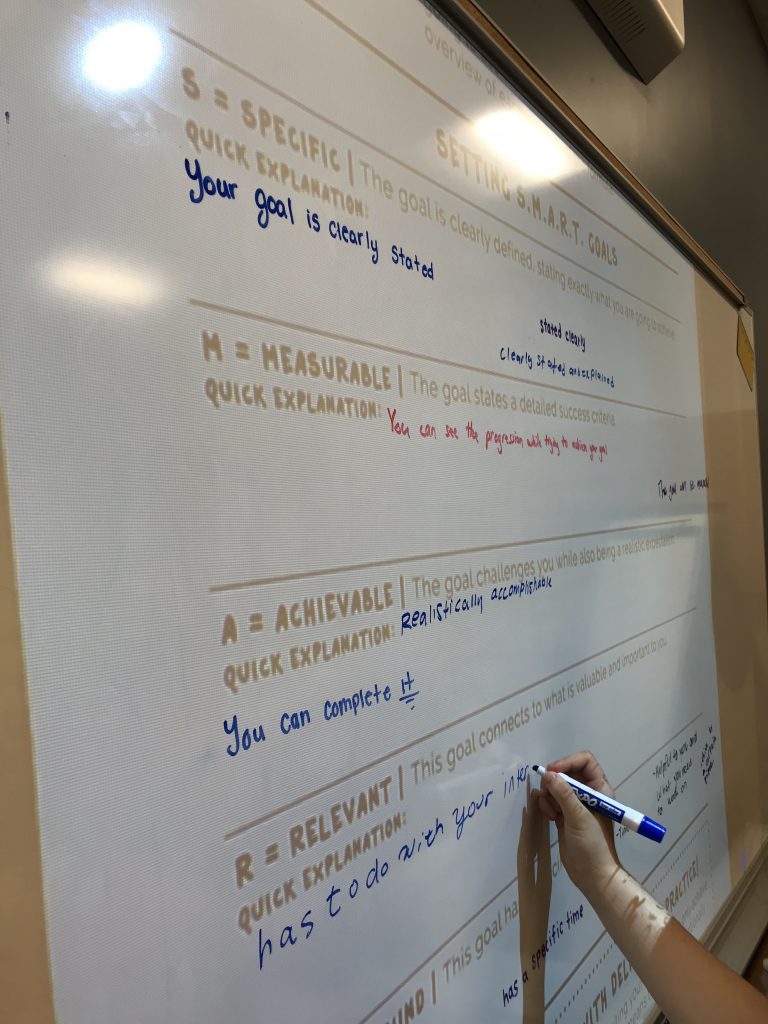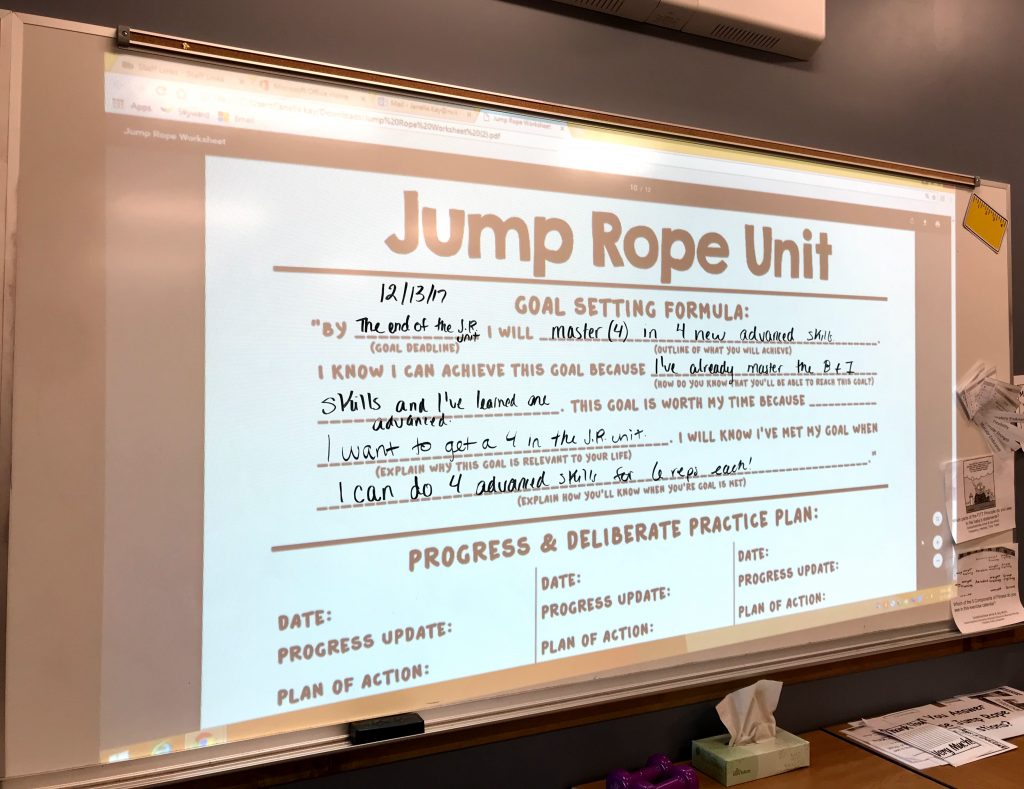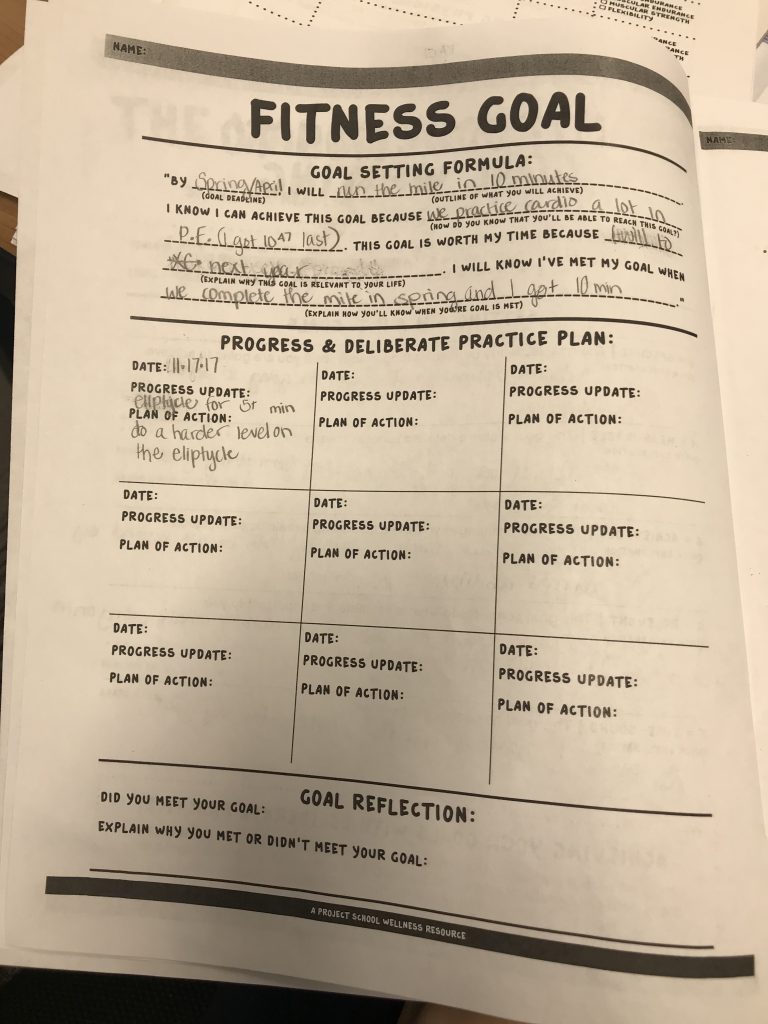teaching middle schoolers how to write SMART goals
A Formula For Writing S.M.A.R.T. Goals
I dunno about you but I find teaching middle schoolers how to write S.M.A.R.T. Goals to be quite a challenging task. Sure my students can quickly list off dreams and aspirations they have for their life…
"I'm going to be a famous YouTuber when I grow up."
"I want to be a professional basketball player."
"My dream is to graduate from Harvard."
But when I ask them to turn their dreams into actionable goals, they stare back at me with blank faces. There seems to be a lack of connection between wanting to achieve something and understanding the steps it takes to actually achieve the dream.
Check out our S.M.A.R.T. Goal Mini Unit Plans & Poster Bundle
Recongizing this disconnet made me realized that teaching middle schoolers how to write meaningful, action-oriented goals was going to take some work. And finally, after a few years of trial and error (a lot of trial and error), I feel like I've created an easy way to coach my students through the goal writing process.
1. Start With Why
Why is goal writing important???? Before we even start talking about what we want to achieve and how to write goals, we talk about the value of knowing how to write goals. Basically, I tell students that writing goals...
- Clarifies what you want
- Motivates actions
- Gives meaning to action
- Makes big things achievable
- Keeps you accountable
- Helps you reach your max potential
2. What Do The S.M.A.R.T. Letters Represent
After helping students understand why goal writing is a key element to succeeding in life, we break down the S.M.A.R.T. acronym. I use posters (⇑) and a worksheet (⇓) to help students understand each component.
- S - Specific - - Your goal is clearly defined and states exactly what you are going to achieve.
- M - Measurable - - Your goal states success criteria, so you can track progress and know when your goal is met.
- A - Achievable - - Your goal challenges you, but is also something realistic.
- R - Relevant - - Your goal is connected to what is valuable and important to you.
- T - Timeline - - Your goal includes a date you will have achieved it by.

Here I projected the worksheet onto the whiteboard and students shared their thinking.
3. The S.M.A.R.T. Goal Formula
Next, the S.M.A.R.T. Goal formula. After some painful attempts over the years at getting students to thoughtfully add each S.M.A.R.T. element to their goals, I realized that they needed some major prompting. So I created a fill-in-the-blank goal writing sheet. They still have to be able to identify and state each element independently, but this helps guide the process. Here's what it looks like:

Before my students write their own goal, I put this up on the whiteboard and we write a goal together.
4. Don't Forget About Deliberate Practice
Writing a high-quality goal is only half the battle. Once the goal is written, the goal is not magically achieved. Intentional work needs to take place to make the goal a reality. And this is where deliberate practice comes in. Deliberate practice refers to intentionally working towards your goals with thoughtful and purposeful action.
Basically, it means that you have a systematic plan of action to meet your goal. Without this type of purposeful action, goals will not be met.

The second section is where students highlight their deliberate practice plan.
To help students build deliberate practice skills, there's space on their worksheet to track progress and define their specific plan of action for meeting their goal.
Wanna learn more about deliberate practice??? I highly suggest listening to this Freakonimcs podcast.
![]()
5. Reflect, Reflect, Reflect
Last but not least, it's time to reflect! When we reflect we can to learn from our experiences. So after my students reach a goal or when the timeline for their goal is met, they reflect. They have two opportunities to reflect: 1) There are two questions at the bottom of their goal writing worksheet and 2) I have an in-depth reflection sheet with six prompts.

Like everything in the classroom, teaching middle schoolers how to write S.M.A.R.T. goals has really been a journey. Finally, in my fifth year of teaching, I feel like I'm making an impact on how well my students can write goals. It's been simplified into an easy process but still requires critical thinking on my students' behalf. Win, win, win! Also, I love that this process is adaptable to any subject across the curriculum or within a student's life.
What about you??? Have you had success teaching students how to write S.M.A.R.T. goals??? If so, I'd love to hear about your journey and what works for you!
Free Resource Library
Grab the freebie featured in this post, along with 30+ other free goodies in our Free Resource Library! Sign up below for instant access.
Hello. I'm Janelle!
A middle school health teacher turned curriculum developer (and #WAHM). I'm on a mission to share the easiest-to-teach, most impactful health lesson plans on the Internet. Because your time and energy is better spent on teaching and connecting, not on planning and prep.



[…] Blog Post: Teaching Middle Schoolers How to Write S.M.A.R.T. Goals […]
Wondering how to ‘grab the freebie’ please?
I signed up…. gave my email, followed all the steps. I get to your main page and search up smart goals and nothing comes up…. PLease help. Thank you.
Hello Andrea,
Please send me an email at [email protected].
Thank you,
Janelle
Thank you this really helped with my class work
Hey Marie!
Thank you for the feedback!
Have a lovely day,
Janelle
[…] Set S.M.A.R.T. goals and exercising deliberate practice in working towards goals […]
Thank you for posting this. I love your handout to keep track of your goal and your progress, I am a librarian and will use this idea with my aides as they set their goals for the semester.
How can I find a copy/printable for the prompted goal-setting worksheet?
Hi Merrie,
Please send me an email at [email protected].
Take care,
Janelle